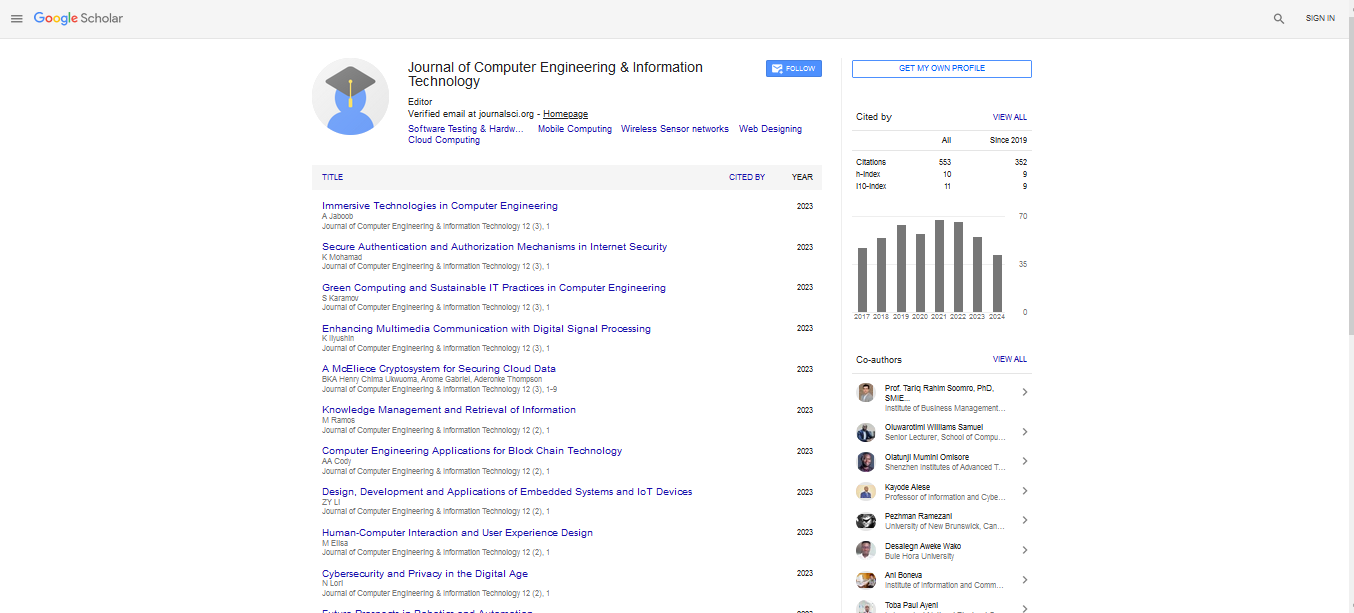Research Article, J Comput Eng Inf Technol Vol: 7 Issue: 2
Investigation the Quality of Service for VOIP Traffic Signaling Protocol using Simulation Based Approach
Fadi Hani Khudhur*, Samer M Al-Saddy and Mohammed Jabbar
Ministry of Science and Technology/Directorate of Space and Communication, Baghdad, Iraq
*Corresponding Author : Fadi Hani Khudhur
Ministry of Science and Technology Directorate of Space and Communication, Baghdad, Iraq
Tel: 04-9283627
E-mail: fadi_a2004@yahoo.com
Received: March 19, 2018 Accepted: May 01, 2018 Published: May 07, 2018
Citation: Khudhur FH, Al-Saddy SM, Jabbar M (2018) Investigation the Quality of Service for VOIP Traffic Signaling Protocol using Simulation Based Approach. J Comput Eng Inf Technol 7:2. doi: 10.4172/2324-9307.1000197
Abstract
Voice over Internet Protocol (VoIP) is a methodology and group of technologies for the delivery of voice communications and multimedia sessions over Internet Protocol (IP) networks. The Internet telephony services (like broad band telephony) specifically refer to the provisioning of communications services (voice, fax, SMS, voice-messaging) over the public Internet, rather than via the public switched telephone network (PSTN). Due to information revolution and rapid technology development, the world has become a small village and the Internet plays a major feature of the current era, especially in multimedia applications, and the principle of its work is to send different data patterns and periods through a number of channels. The function of VoIP technology is the use of packet switched networks instead of traditional PSTN, and transmission over IP in real time. Applications involved with this technique have led to a Quality of Service (QoS) deficit that are of (delay, packet loss and throughput) such parameter are a concern because it will lead to the collapse of the technology. Therefore, these issues have made users looking for efficient, reliable and secure communication systems through VoIP. The aim of this paper is to study and understand the traffic behavior by using the NS2 simulator program capabilities to show and investigate the limited and optimum conditions resulting through network topology traffic differences.
 Spanish
Spanish  Chinese
Chinese  Russian
Russian  German
German  French
French  Japanese
Japanese  Portuguese
Portuguese  Hindi
Hindi 